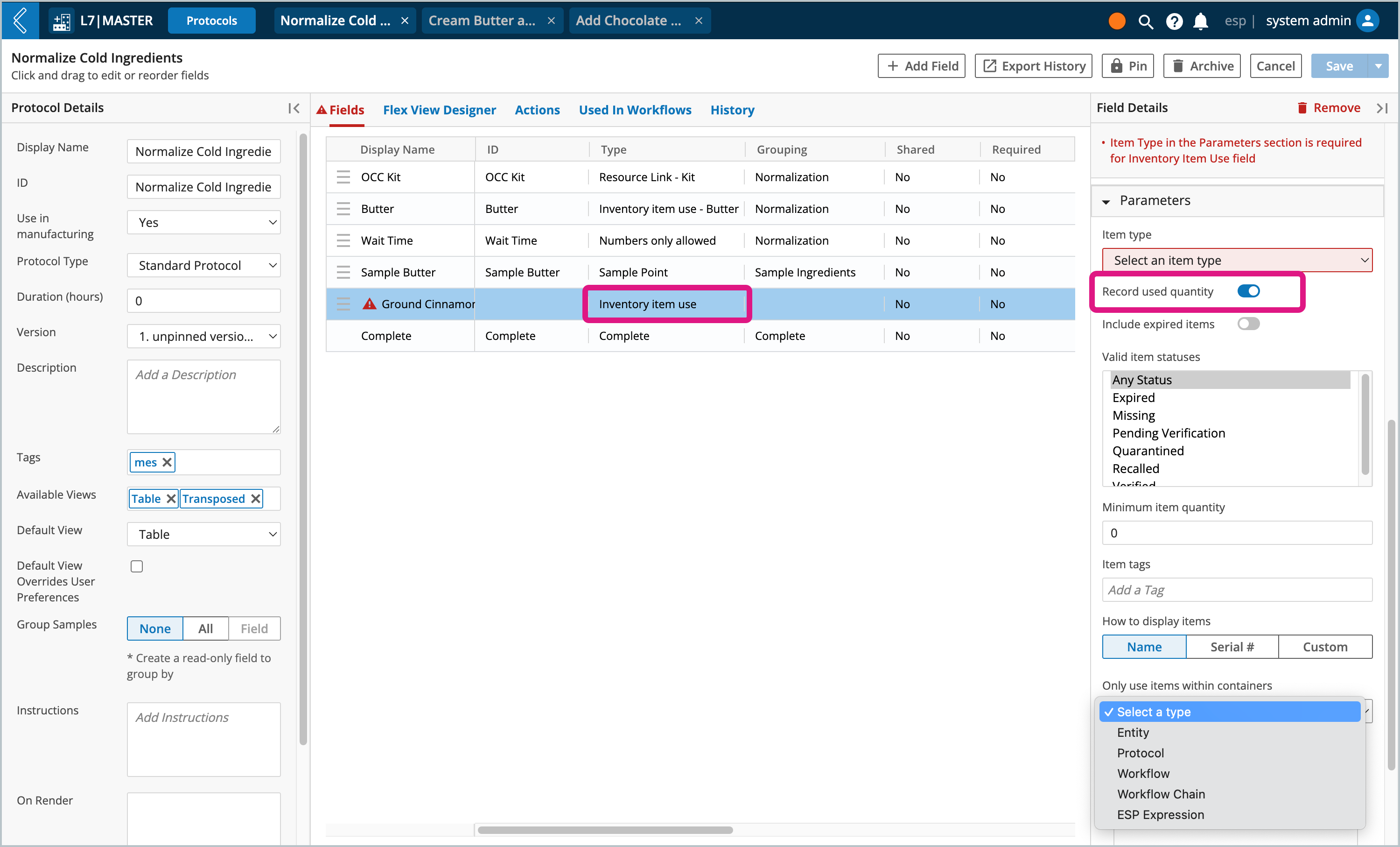Bill of Materials (BOM)
Goals
Know how to link a Kit to a Batch.
Know how to incorporate Item usage into a Batch.
BOM Tab Overview
The Bill of Materials (BOM) tab displays information about Kits associated with the Batch (Available Items) and the Items consumed during Batch production (Item Usage). Kits and Items can be viewed for a single Unit Operation or all Unit Operations in the Batch.
To view a single Unit Operation, select the Unit Operation in the left panel.
To view all Unit Operations in the Batch, turn on Show All Unit Operations at the top of the tab.
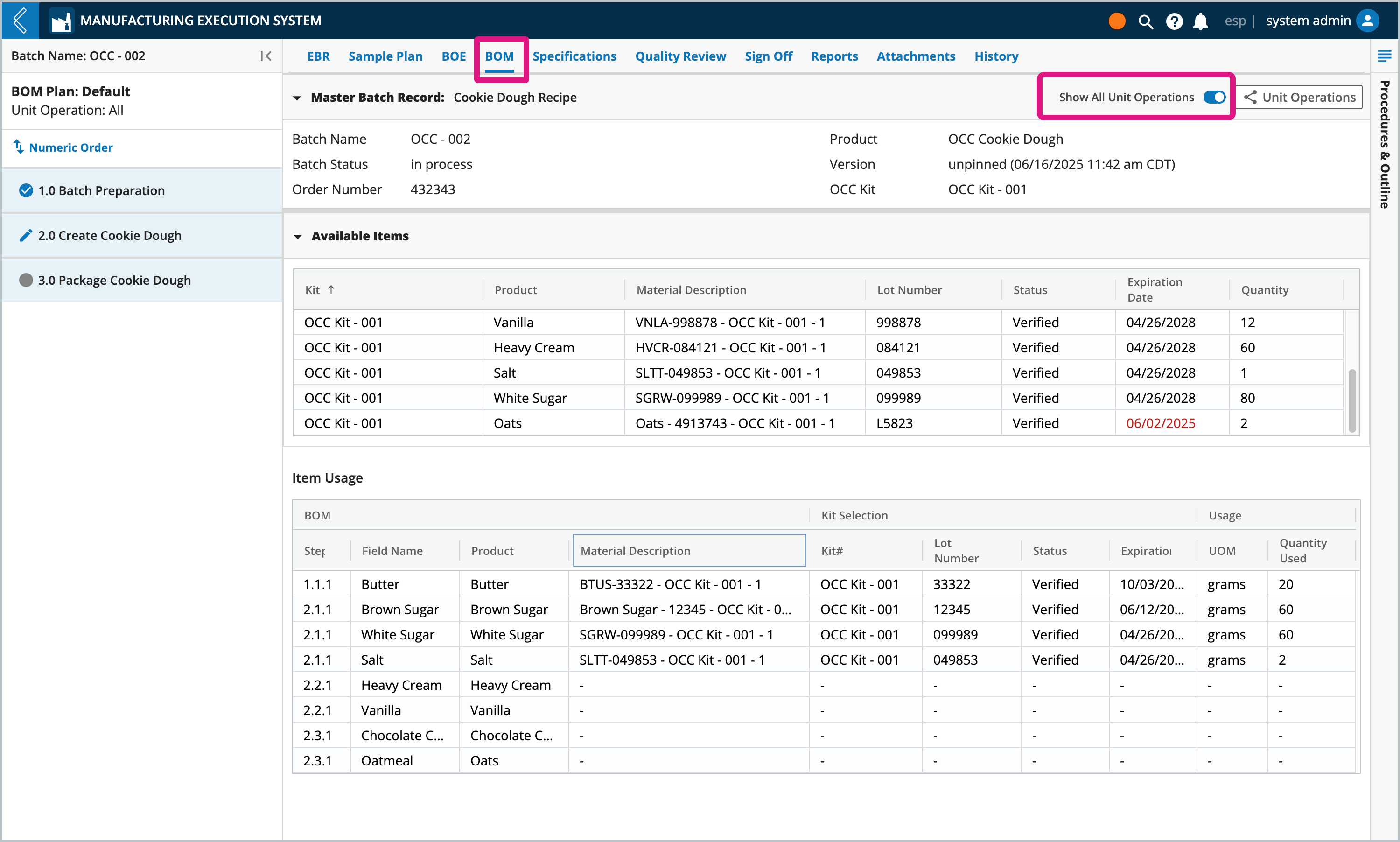
The Unit Operations button displays an overview of the manufacturing process (Recipe).
Note
In the BOM tab, this is for viewing purposes only.
Mapping L7|ESP resources to the BOM tab
Use the the table below to see how Kits and Items are displayed in the BOM tab, and where these values are defined should they need to change.
Field Name | L7|ESP Resource | L7|ESP App |
|---|---|---|
Kit | Kit Name | L7 Assets |
Product | Item Type Name | L7|MASTER |
Material Description | Item Name - Kit Name - Kit Position | L7 Inventory L7 Assets |
Available Items Table
This table includes information about the Kits associated with the Batch. If Kits are not used in the Batch, this table will be empty and can be collapsed by selecting the arrow to the left of the table name.
The following information is displayed in this table:
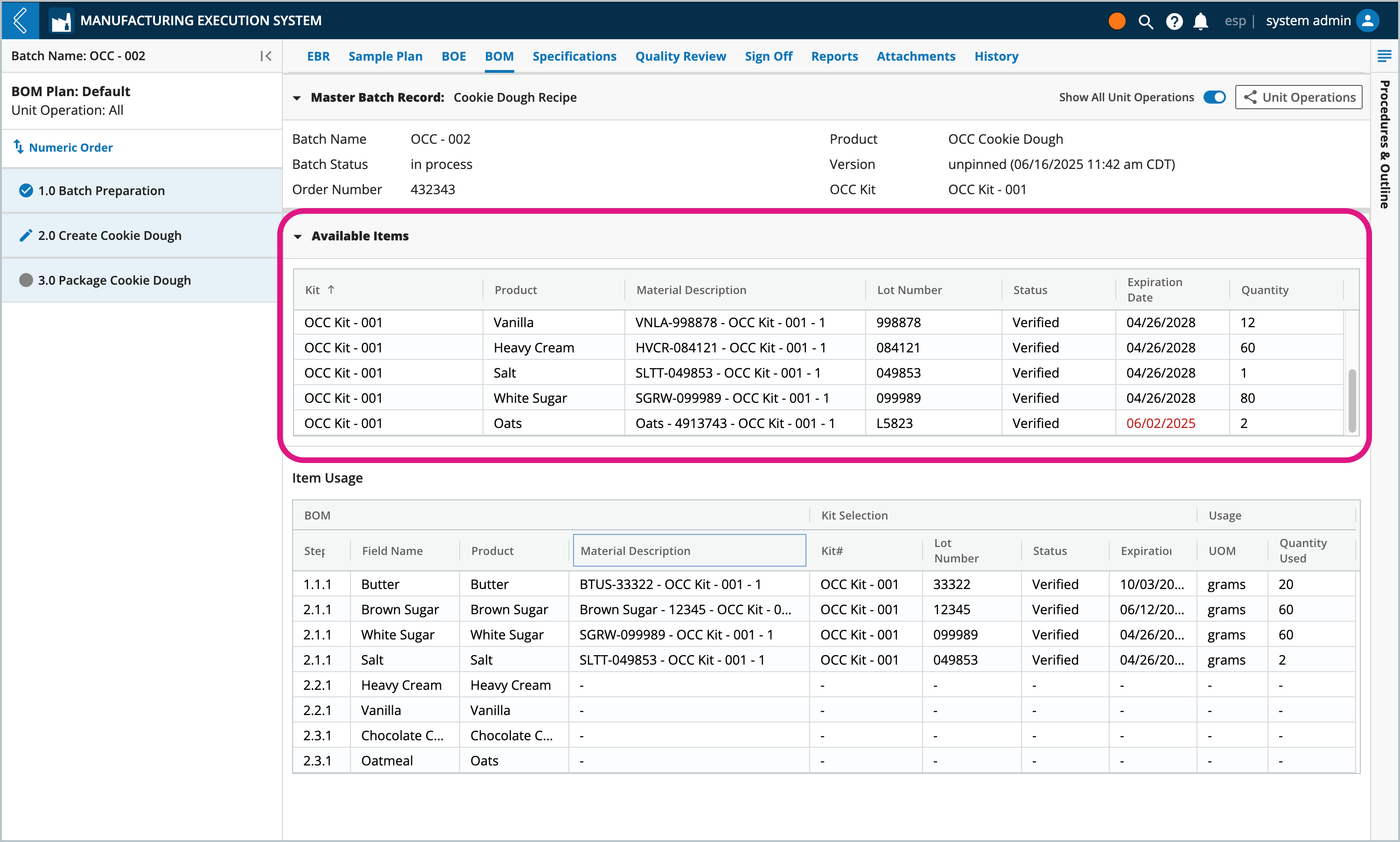
Kit – the name of the Kit.
Product – the type of Item in the Kit.
Material Description – the name of the Item in the Kit.
Note
Recall that a coalesced resource is created when an Item is transferred to a Kit with a specified quantity.
Lot Number – the lot number of the Item in the Kit.
Note
If more than one lot of the same Item is included in the Kit, each lot will be listed on its own row.
Status – the status of the Item in the Kit.
Expiration – the expiration date of the Item in the Kit.
Note
Expired Items are highlighted in red.
Quantity – the current quantity of the Item in the Kit.
How to setup the Available Items Table
To have Items listed in Available Items table, begin by creating a custom field for Kit selection:
Create a Kit Resource Link field
Add the custom field to the Batch Entity Type or a Protocol (Batch Entity Type used in this example).
Optionally add a tag to the field.
Set the Type as Resource Link.
Set the Link Type as Kit.
Restrict To the desired Kit Type.
Select the Valid Statuses to filter the list of Kits based on their status (optional).
Change the Kit status after use (optional).
Tip
Steps 6 and 7 prevent the same Kit from being assigned to more than one (1) Batch.
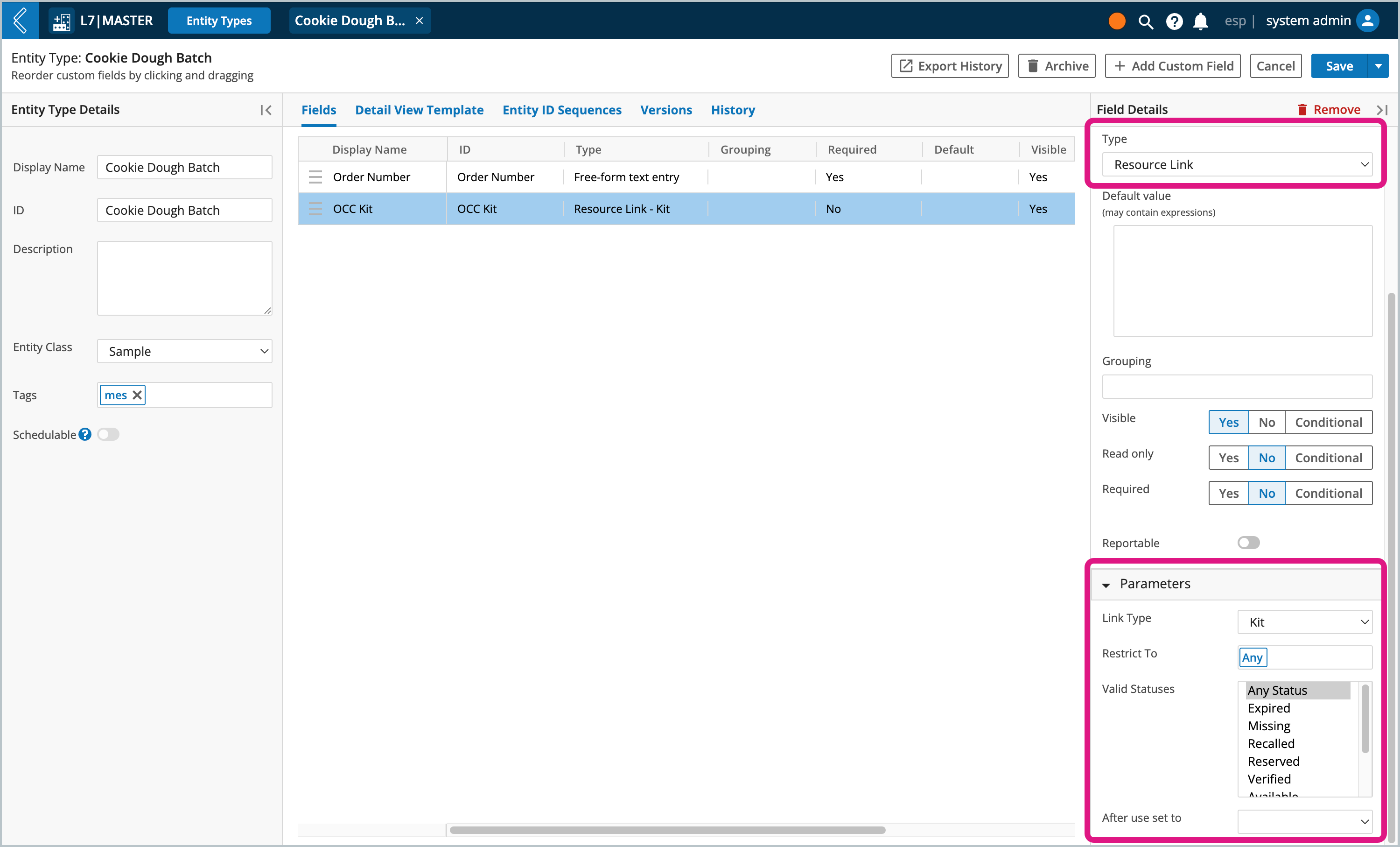
Set Inventory Item Use fields to only use items within containers
Then for each inventory field where an Item will be consumed from the Kit:
Create or go to an Inventory Item Use custom field
Use the Only use items within containers picklist to point to the Kit Resource Link custom field where the user selects the Kit containing this Item.
Note
The Only use items within containers picklist will allow you to reference fields on the Entity, Protocol, Workflow, Workflow Chain, or you may enter a custom ESP Expression.
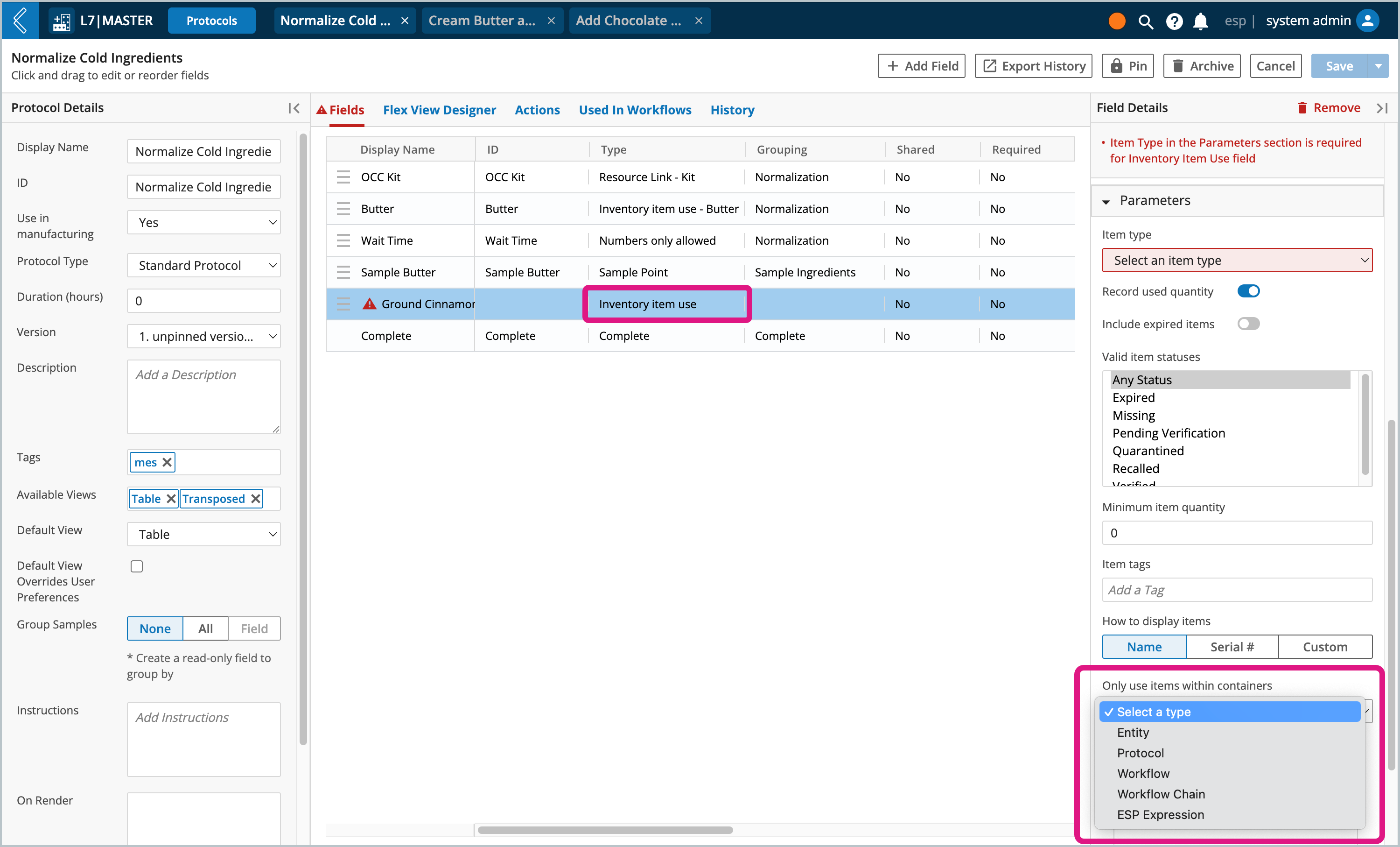
Expression | Description |
|---|---|
| Used to reference a Batch Entity Type field. |
| Used to reference a field in a Protocol by |
| Used to reference a field in a Protocol by |
Item Usage Table
This table includes information about the Kit content (Items) consumed during Batch production. Items are consumed in Steps (Protocols) using the Inventory item use field.
The following information is displayed in this table:
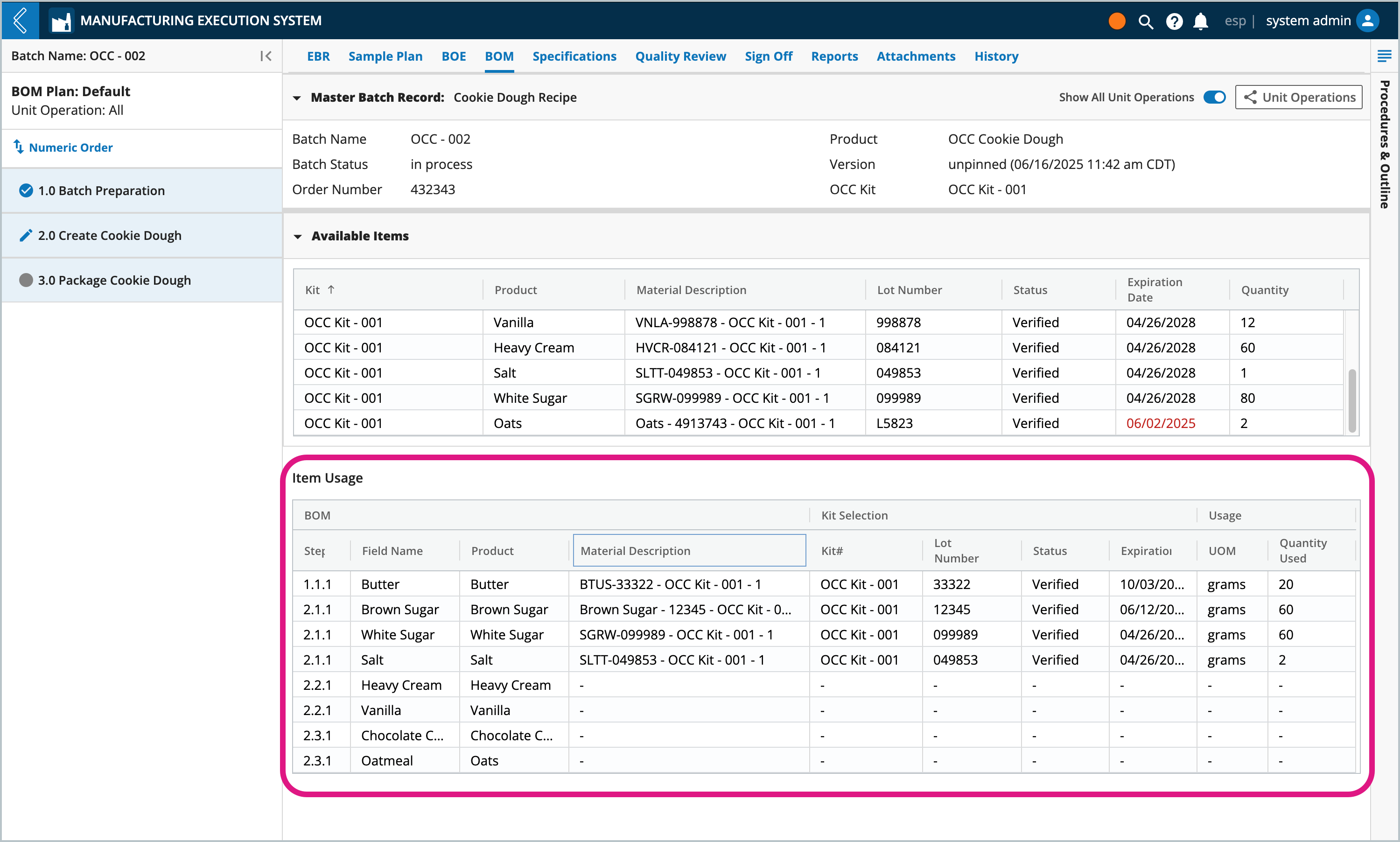
Step – where in the process the Item was consumed.
Field Name - the name of the custom field of where the inventory item usage was recorded.
Product – the type of Item consumed.
Material Description – the name of the Item consumed.
Kit # – the Kit that contained the Item.
Lot Number – the lot number of the Item consumed.
Note
If more than one lot of the same Item is consumed, each lot will be listed on its own row.
Status – the status of the Item consumed.
Expiration – the expiration date of the Item consumed.
UOM – the unit of measure for the Item consumed.
Quantity Used – the quantity of the Item consumed.
Items can be tracked independent of quantity. For non-quantity inventory items, Unit of Measure (UOM) and Quantity Used are null and N/A, respectively in the Item Usage table.
